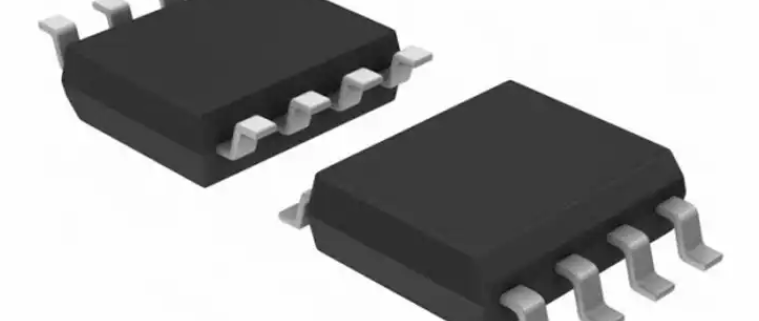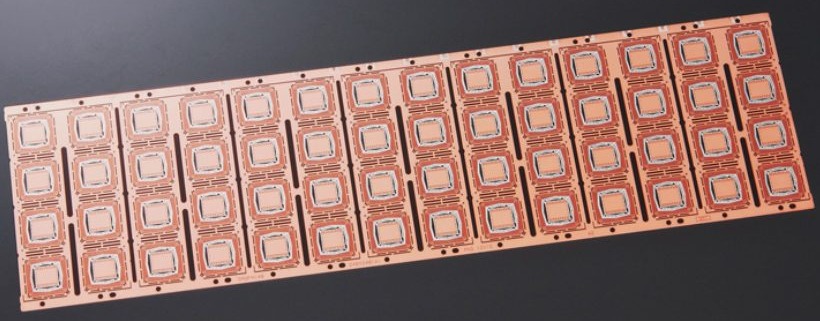The Small Outline Integrated Circuit (SOIC) is a widely used surface-mount IC package that offers reduced size, improved thermal performance, and enhanced electrical characteristics compared to traditional through-hole components. Its compact and standardized form factor makes it ideal for both consumer and industrial electronics. In modern electronics, the SOIC plays a crucial role in miniaturization, enabling the design of smaller, lightweight devices. Its compatibility with automated soldering processes ensures cost-effectiveness and reliability in high-volume production. Extensively used in PCB design, the SOIC is found in applications like microcontrollers, memory chips, and analog circuits, particularly in automotive electronics, communication systems, and medical devices, where space-saving and high-performance integration are essential.
Semiconductor packaging plays a crucial role in the electronics industry, ensuring the protection, connectivity, and thermal management of integrated circuits (ICs). Among various packaging technologies, TSOP/LOC Lead Frame is widely used due to its reliability and cost-effectiveness.
A lead frame is a metal structure that provides mechanical support and electrical connections for semiconductor chips. It acts as a bridge between the silicon die and the external circuitry, facilitating efficient signal transmission and heat dissipation. This specific type of lead frame is used in Thin Small Outline Package (TSOP) and Lead-On-Chip (LOC) packaging, both essential for high-density, low-profile semiconductor devices.
TSOP is a compact and thin package commonly used for memory devices like NAND and NOR Flash, while LOC technology enhances performance by placing leads directly on the chip surface. Together, TSOP/LOC Lead Frame solutions offer excellent electrical performance and space efficiency, making them a preferred choice in modern semiconductor applications.
Plastic Leaded Chip Carrier (PLCC) Lead Frame is a semiconductor packaging technology designed for efficient, reliable IC connections. This surface-mount package features J-leads, offering mechanical support and electrical connectivity in a compact form. PLCC is significant in electronics as it allows for high-density PCB designs and can be used with surface-mount technology (SMT) or in sockets for easy replacement. Its versatility makes it ideal for applications like microcontrollers, memory chips, and logic devices, requiring durability, reusability, and high thermal performance. The purpose of this article is to provide a detailed exploration of PLCC, discussing its structure, manufacturing process, advantages, and key applications in the modern electronics industry.
阅读更多
The Plastic Dual In-line Package(PDIP) Lead Frame is a widely used electronic packaging solution, known for its versatility and cost-effectiveness. PDIP features two parallel rows of pins, allowing for easy insertion into printed circuit boards (PCBs), making it ideal for through-hole mounting and manual soldering. Its importance in the electronics industry lies in its reliability, durability, and ability to house various types of integrated circuits, such as microcontrollers and operational amplifiers. This article aims to provide a comprehensive analysis of the Plastic Dual In-line Package(PDIP) Lead Frame, exploring its structure, manufacturing process, and role in enhancing the performance of PDIP packages, offering insights into its continued use in consumer electronics, industrial control systems, and more.
IC packaging is the process of enclosing semiconductor chips in a protective case to ensure electrical connections and mechanical stability. It plays a crucial role in determining the performance, reliability, and integration of integrated circuits (ICs) in electronic devices. One widely used packaging type is the Thin Quad Flat Pack Lead Frame (TQFP), a surface-mount technology that features a square-shaped package with leads extending from all four sides.
This packaging design is specifically created to accommodate high-pin-count ICs while maintaining a thin profile, making it ideal for compact electronic devices. Its lightweight structure, excellent heat dissipation, and ease of PCB assembly contribute to its popularity. The semiconductor industry favors this packaging due to its cost-effectiveness, space efficiency, and reliable electrical performance, making it a preferred choice for consumer electronics, automotive systems, industrial controls, and telecommunications applications.
In semiconductor packaging, the Quad Flat Non-Lead Frame (QFN) has become a widely used solution for modern electronics. Semiconductor packaging plays a crucial role in protecting integrated circuits (ICs), ensuring electrical connections, and enabling efficient heat dissipation. Traditional leaded packages, such as Dual In-Line Packages (DIP) and Quad Flat Packages (QFP), have been widely used, but as electronic devices become more compact and power-efficient, new packaging technologies are required.
The package is particularly important in today’s electronics due to its small form factor, excellent thermal performance, and low electrical resistance. Compared to leaded packages, it offers significant advantages, including reduced parasitic inductance, enhanced heat dissipation through an exposed die pad, and cost-effective manufacturing. These benefits make it a preferred choice for high-performance applications, including consumer electronics, automotive systems, and industrial devices. As technology advances, this packaging type will continue to play a vital role in semiconductor packaging.
QFN (Quad Flat No-Lead) and QFP (Quad Flat Package) are two popular surface-mount IC packaging types, each offering distinct advantages. QFP features extended leads on all four sides for easy inspection and soldering, while QFN is a leadless package known for its superior thermal and electrical performance due to direct pad connections to the PCB. In semiconductor packaging, the lead frame plays a crucial role by providing electrical connections and structural support, ensuring efficient signal transmission, heat dissipation, and mechanical stability. Among the various materials used, AU/Silver QFN/QFP Lead Frame is highly preferred due to its excellent electrical conductivity, thermal properties, and resistance to oxidation. Gold (AU) enhances durability and reliability, while silver (Ag) offers a cost-effective solution with strong conductivity, making AU/Silver QFN/QFP Lead Frame the ideal choice for high-performance applications in consumer electronics, automotive, and industrial sectors.
IC packaging plays a crucial role in protecting semiconductor chips while ensuring efficient electrical connections and heat dissipation. Leadframe-based packaging is widely used due to its cost-effectiveness, reliability, and excellent thermal performance, providing a stable mechanical structure and efficient electrical pathways. One of the most advanced leadframe-based solutions is the Non-Lead Package (QFN) Leadframe. Unlike traditional leaded packages such as QFP, the QFN package eliminates protruding leads, offering a compact, lightweight design with enhanced electrical and thermal performance. This makes the Non-Lead Package (QFN) Leadframe particularly suitable for high-density, high-performance applications in sectors like consumer electronics, automotive, and industrial. As demands for miniaturization and efficiency increase, QFN continues to gain popularity, providing a balance of performance, manufacturability, and cost-effectiveness.
Semiconductor packaging plays a crucial role in the development and functionality of integrated circuits (ICs). As the industry continues to push for smaller, faster, and more efficient devices, the need for innovative packaging solutions has never been greater. IC packaging protects the delicate semiconductor chip while enabling it to connect to external circuits, ensuring reliable performance. Among the many packaging methods, Lead Frames on Chip Package have become essential components, offering a cost-effective and efficient solution for high-volume production.
A Lead Frame is a metal framework used in semiconductor packaging to electrically connect the chip to external leads. Made from materials like copper or copper alloys, the Lead Frame serves as a structural base that provides electrical paths and mechanical support to the IC. Its design is critical in maintaining the integrity and performance of the chip throughout its lifecycle, making it an indispensable element in modern IC packaging technologies.
Semiconductor packaging plays a crucial role in the electronics industry, as it protects the delicate microchips while ensuring reliable electrical connections between the chip and external components. As the demand for smaller, more efficient electronic devices continues to grow, the importance of miniaturized semiconductor packaging has become more evident. In this rapidly evolving field, DNP (Dai Nippon Printing Co., Ltd.) stands out for its innovation and leadership. DNP has developed cutting-edge solutions that address the challenges of miniaturization, particularly with its “DNP Lead Frame for Miniaturized” technology. This advanced lead frame technology enables the production of compact, high-performance semiconductor packages that meet the strict requirements of modern electronic applications. The purpose of this article is to delve into DNP’s “Lead Frame for Miniaturized” technology, exploring its key features, applications, and the critical role it plays in the semiconductor industry’s ongoing drive toward miniaturization and enhanced device performance.
CONTACT US
4th Floor, A3 Building, HuaFeng Industrial Park, GuanTian Village, BeiHuan Road, ShiYan Street, Bao An District, Shenzhen City, Guangdong Province, China
Tel:086 (0)755-8524-1496
WhatsApp: 8615014077679
Skype: Henrychinasz
📧 pcb@alcantapcb.com
CONTACT US
SHIPPING
![]()
CERTIFCATION
![]()
recent articles
 Copper Core PCB vs Aluminium Core PCB Explained2025-09-18 - 7:13 上午
Copper Core PCB vs Aluminium Core PCB Explained2025-09-18 - 7:13 上午 Microwave PCB Manufacturers | RF Design and Fabrication2025-09-16 - 7:58 上午
Microwave PCB Manufacturers | RF Design and Fabrication2025-09-16 - 7:58 上午 Flex PCB Manufacturing Process: Step-by-Step Guide2025-09-10 - 6:59 上午
Flex PCB Manufacturing Process: Step-by-Step Guide2025-09-10 - 6:59 上午 PCB Lamination Process & Sequential Lamination2025-09-04 - 8:10 上午
PCB Lamination Process & Sequential Lamination2025-09-04 - 8:10 上午










